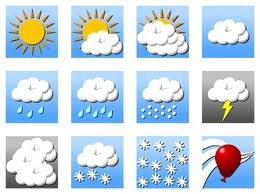Climate of Thailand
Most of Thailand has three distinct seasons which shade into one another. These are the rainy season, the cool dry season, and the hot dry season. The lushness of the vegetation is accounted for by the rainy season which normally begins in May and gets into full swing in July, climaxes in September or October, and then peters out in November. Just because it is called the rainy season, does not mean it rains all the time, nor even every day. What it does mean is that it rains heavily on many days, most often in the afternoon, but rarely for more than an hour or two.
In Bangkok and the Central Plains, rain averages about 200 mm monthly from May to October, and temperatures overage 24 C to 32 C, from night to day. In Chiang Mai (North of Thailand)in the some period, rain overages 160 mm monthly and temperatures range from 23C to 31C. The North-east falls roughly into the some weather pattern, with a shorter and lighter rainy season.
The cool dry season from late November to February is Thailand’s most Pleasant. Temperatures drop in the Central Plains just enough to make all the difference, with on average minimum temperature of 21'C, whilst Chiang Mai goes down to 14'C on average.
The most unpleasant time is the hot dry season from late February to early May, when temperatures are usually in the upper 30s in the daytime and the will to do anything at all evaporates. Most of Thai people take our holidays in April (if we have them) and the long university and school vacations wisely extend through this period. Also if you know about Thai New year festival call "Song kran" it is set on 13 - 15 of May every year. In This festival is very very happy for every body if you were there you will definitely get wet with water from our blow. The north-east areas experience the hottest weather at this time.
These patterns prevail except in the south, where there is less seasonal variation and more constant attribution of rainfall and temperature. Since this peninsular region receives two monsoons, rain falls in December and January too.

ไม่มีความคิดเห็น:
แสดงความคิดเห็น